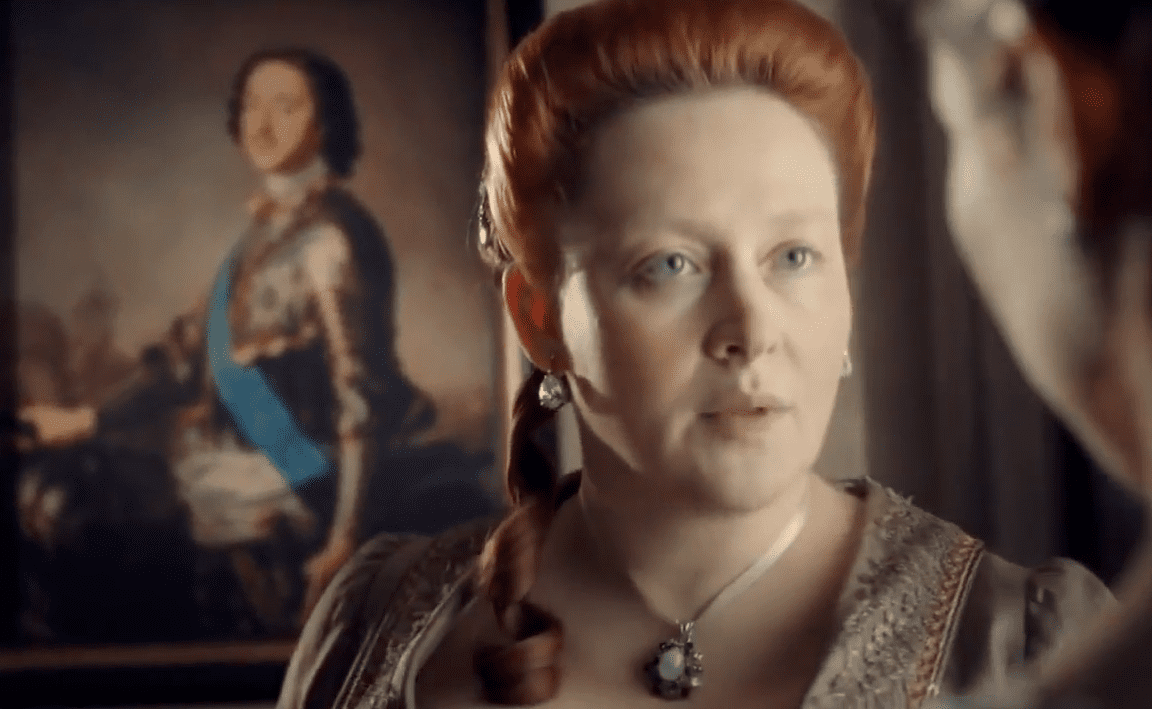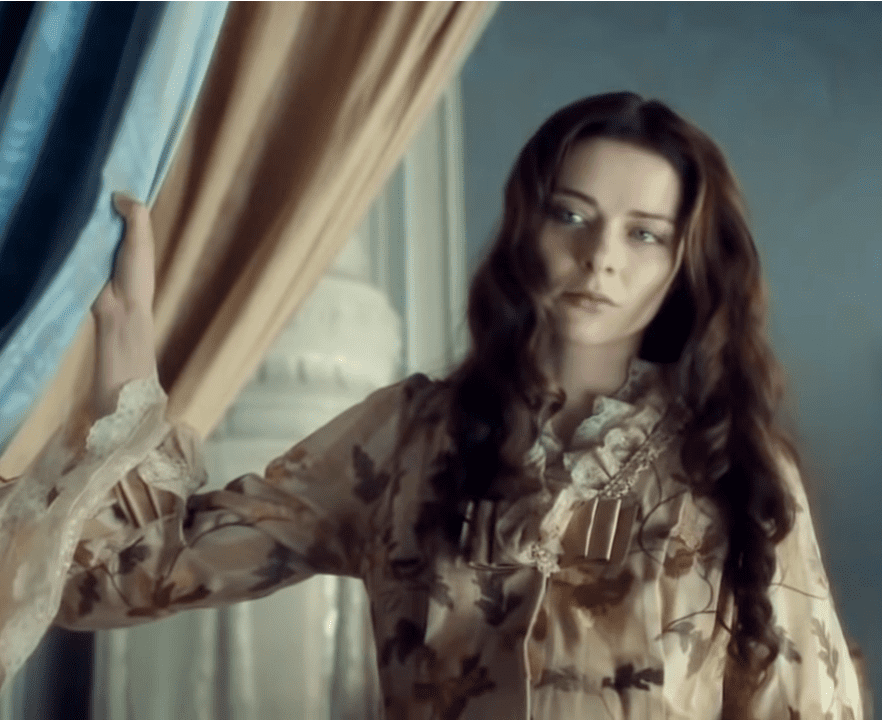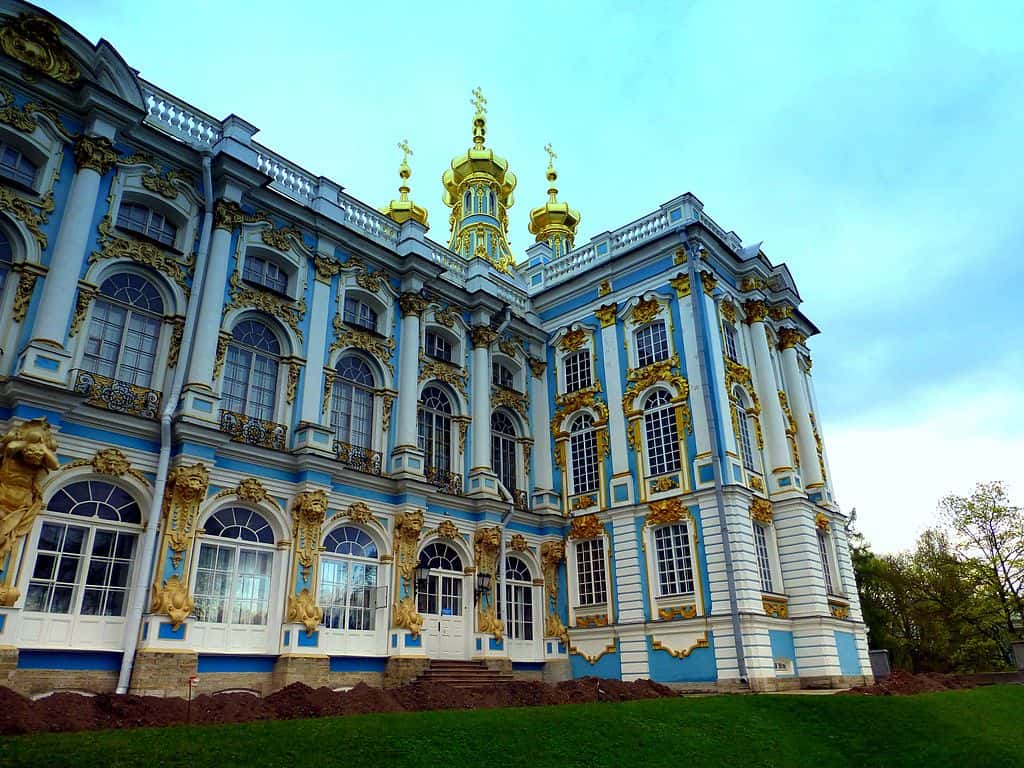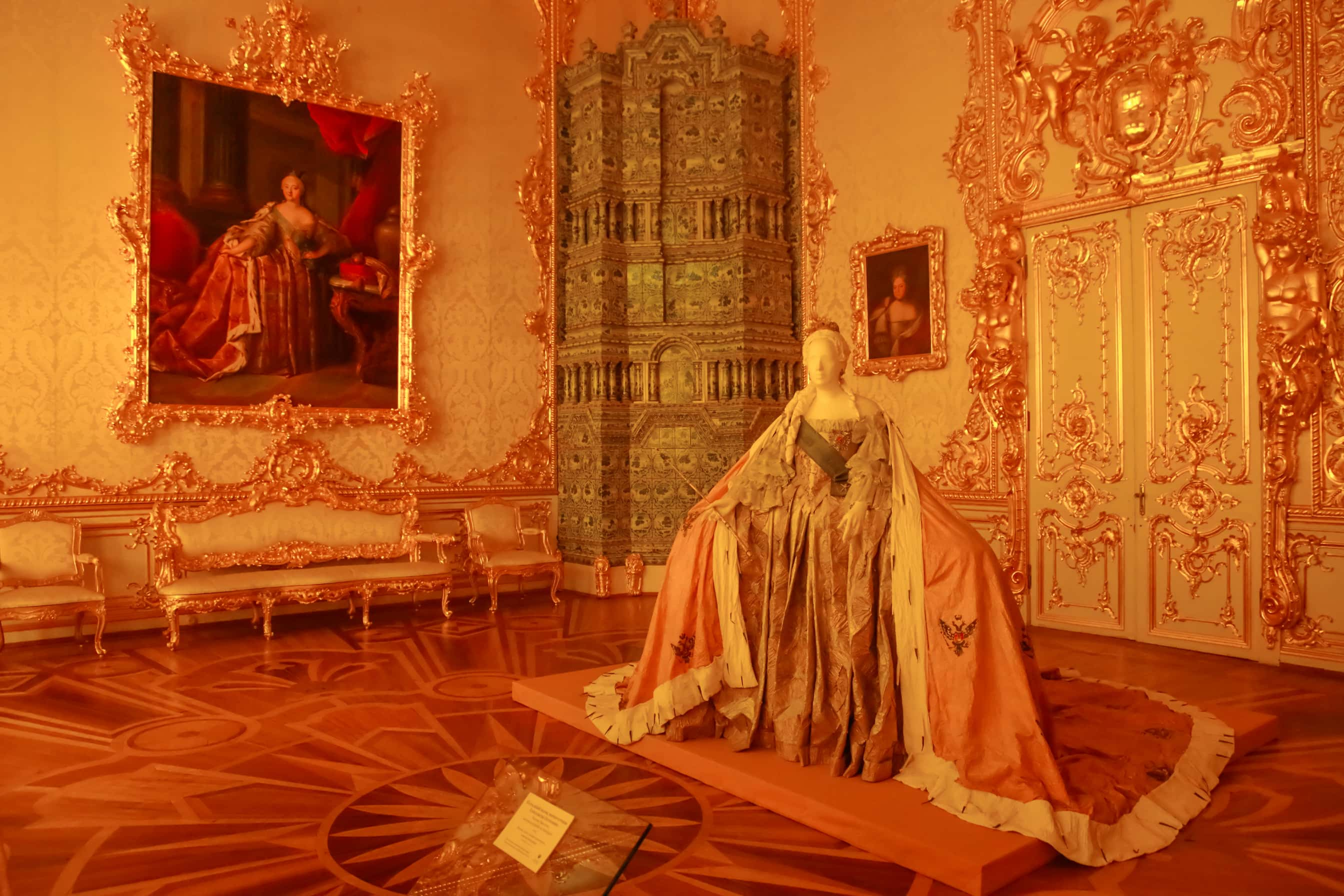"I may be kindly, I am ordinarily gentle, but in my line of business I am obliged to will terribly what I will at all." —Catherine the Great
Catherine II was the Empress of Russia from 1762-1796. In 1745, she converted to Russian Orthodoxy and married Grand Duke Peter of Russia. As Empress, she became known as Catherine the Great, and in the role she expanded and modernized the Russian Empire. Below are 42 facts about this enlightened monarch.
42. That's Not My Name
Catherine the Great was born Sophie von Anhalt-Zerbst to an insolvent Prussian Prince. She changed her name to Ekaterina (Catherine) when she converted to Russian Orthodoxy immediately prior to her marriage.
41. Good Prospects for Marriage
Catherine’s mother had strong bloodlines, and that gave her good prospects for marriage. When she was 15, her mother got her an invitation to meet the Empress Elizabeth, who was searching for a bride for her nephew and heir Peter.
40. Well-Schooled
Growing up, Catherine was educated by tutors in subjects of religion, history, and languages. She learned German, French and later Russian, which came in handy when she met the Russian Grand Duke Peter.
39. Wild Ride
Catherine spent much of her early married life riding her horse. She refused to ride side-saddle, and wrote “The more violent the exercise, the more I enjoyed it."
38. Fike
As a child, Catherine was nicknamed "Fike," short for "Figchen."
37. Family Connection
Empress Elizabeth had a prior connection to Catherine’s family. Elizabeth had previously been engaged to the brother of Catherine's mother before he died of smallpox, and Elizabeth felt a connection to Catherine’s family.
36. Where's Maury When You Need Him?
Catherine and Peter had been married for eight years before she was able to produce an heir, Paul, leading many to speculate whether or not the son was actually Peter's. Some historians have suggested that Peter was infertile or had not consummated the marriage, and there were rumors that a Russian military officer named Sergi Saltykov was the true father.
35. Not a Match Made in Heaven
Catherine and Peter’s marriage was rocky from the start. Peter was immature and preferred his toy soldiers and mistresses to his wife.
34. No True Heirs
While the paternity of Catherine’s first son was never confirmed, it is widely believed that none of Catherine’s other three children were fathered by Peter.
33. Lofty Ambitions
After Elizabeth’s death in 1761, Catherine’s husband Peter ascended to the throne as Peter III, but his policies alienated the lower nobility and angered the Orthodox Church. As a result, a plot was hatched to unseat Peter and place his son Paul on the throne, with Catherine installed as Regent. However, Catherine did not want to fade into the background: she, with the help of her lover Gregory Orlov, gathered support from the country’s most powerful military regiment and declared herself Catherine II, the sole ruler of Russia. She had Peter arrested, and forced him to abdicate his position as Emperor. Talk about a bad marriage.
32. Conspiracy, Maybe
A few days after abdicating, Peter was murdered by one of Catherine's co-conspirators. The exact role she played in his death has never been proven, but it’s possible that she arranged it.
31. Friends with Benefits
Catherine’s long-time lover (and father of one of her children) Stanislaw Poniatowski benefited greatly from Catherine’s support. They remained close even after their relationship ended, and once she rose to power, she helped to install him as king of Poland. Angered at his efforts to strengthen Polish independence, the bond between them later soured, and she forced Poniatowski to abdicate.
30. Nakaz
One of Catherine’s efforts at social reform came in a document known as the Nakaz. It outlined how the country’s legal system should run, called for capital punishment and torture to be outlawed, and for every man to be declared equal.
29. Not Exactly Besties
Catherine was not terribly close to her mother. As was the custom with Prussian aristocratic children, she was cared for by a nanny and saw her mother, who reports indicate was a cold woman, infrequently.
28. Back from the Dead
During her reign, Catherine faced more than a dozen uprisings. The most dangerous uprising was in 1773, when a group of armed Cossacks and peasants led by Emelyan Pugachev rebelled. Pugachev claimed that he was in fact a returned (and still alive) Peter III, and therefore the heir to the rightful throne. Catherine responded with massive force, and he was publicly executed in 1775.
27. An Enlightened Ruler
Catherine considered herself to be one of Europe’s most enlightened rulers. She wrote several books, pamphlets, and educational materials aimed at improving Russia’s education system, and she was a great champion of the arts. She created one of the world's foremost art collections, housed at the Winter Palace (now the Hermitage Museum) in St. Petersburg.
26. Dominance
After declaring herself the Sovereign ruler of the Russian Empire, Catherine successfully led Russia against the Ottoman Empire, securing Russia’s status as one of the most dominant countries in Europe. She also defeated the Polish–Lithuanian Commonwealth, leading to the partitioning of Poland and the division of its territory between Russia, Prussia, and Austria. By the end of her reign, the Russian Empire had expanded by both conquest and diplomacy, adding about 200,000 square miles to its territory.
25. A Suitable Boy
Catherine’s relationship with her eldest son Paul was a difficult one. He was taken away from her as a child and raised by Empress Elizabeth, and then, as an adult, he was kept away from matters of state. Catherine raised Paul’s son Alexander, and considered him to be a more suitable heir than his father. She died before she could make it official, and Paul succeeded Catherine to the throne. Paul’s policies were unpopular, and he was assassinated five years into his reign. Alexander succeeded him and ruled until his death in 1825.
24. Charter of Nobility
In 1785, Catherine issued an edict known as the Charter to the Nobility or Charter to the Gentry, which greatly increased the power of the nobility and the upper-classes, and forced much of the population into serfdom (servitude). In doing so, she inadvertently fostered ill-will between the old aristocracy (titles received through family lines), and new gentry (those given their status as reward for service to the state).
23. Pays to be her Lover
Catherine was extremely generous towards her lovers. She would gift them with titles, lands, palaces, and even people, once giving a lover 1,000 serfs. But becoming a lover of Catherine the Great was no easy task.
According to several historical records, in order to become a lover of Catherine the Great, there was an intimate test. Before being welcomed into Catherine's bed, prospective suitors had to first satisfy Catherine's lady-in-waiting (personal assistant), Countess Praskovya Aleksandrovna Bruce.
It's unclear how much truth there is to this story because Catherine's enemies spread many rumors about her postmortem. However, this claim is documented in several historical manuscripts.
It is widely reported that Catherine and Countess Praskovya Aleksandrovna Bruce's relationship didn't end well. In 1779, an advisor led Catherine into a room where Catherine's latest lover, Ivan Rimsky-Korsakov, was having intercourse with Bruce. The lover was sent into exile, and Bruce followed him. Bruce was relieved of her duties as lady-in-waiting shortly after.
22. Myth Busting
There is just as much misinformation (or unprovable claims) as information on Catherine II. Some juicy wish-they-were-true examples: that she kept her hairdresser in a cage to keep her wig a secret and that she advocated for having "physical relations" at least six times a day, claiming that it helped her relieve her insomnia. Neither of these claims have been verified by historic record.
21. The Amber Room
The Amber Room was a gorgeous room made up of gilded panels encrusted with amber. It was built in the 1701 in Prussia, given to Peter the Great as a gift, and finally installed in the Catherine Palace. The room was used by Russian royals to entertain and impress foreign guests and dignitaries. It survived for centuries until the Nazis dismantled it and sent it to Konigsberg Castle in Prussia; today, Konigsberg lies in ruins. Nonetheless, in 2003, a reconstruction of the Amber Room was completed at the Catherine Palace.
 Wikimedia Commons, Andrey Zeest
Wikimedia Commons, Andrey Zeest
20. Not a Good Time to Be Poor
Despite the many great things that Catherine did during her reign, she also made things a great deal worse for the lower classes. When Catherine came to the throne, she was intellectually opposed to serfdom. Unfortunately, she quickly realized that the nobility on whom she relied would not tolerate any increase in the rights and freedoms of serfs, and she implemented several policies that made their situation worse.
19. Publicly Prudish
Catherine the Great’s view of herself as an "enlightened empress" called for reason and self-control, so she had Giulio Romano’s erotic painting “Two Lovers” put in the basement of the Winter Palace because she had to appear chaste to the public.
18. Armchair Traveller
Once Catherine arrived in Russia to marry Peter, she never left the country again. Some historians believe that she was afraid that people would attempt to usurp her throne if she left, so instead she curated an incredible art library, and had parts of the Winter Palace decorated to evoke works of art she’d never see.
17. Gave Herself Completely
Despite rumors to the contrary, Catherine’s numerous lovers weren’t merely flings. She reportedly gave herself completely to her lovers, having relationships that lasted between one and 12 years.
16. False Humility
Catherine was quite the art expert, but she told artists whom she commissioned that she was an art "glutton" who "knew less than a child" about art. She was a powerful woman who was frequently the smartest person in the room, and she would downplay these traits for her own political survival.
15. Tone Deaf
Despite being a patron of the opera, in her memoirs Catherine described herself as tone deaf, and considered music to be "an infernal noise."
14. Knew What She Wanted
Catherine didn’t simply send agents to acquire art for her. She not only told them exactly what she wanted, she included her own sketches and detailed instructions to her favorite architect.
13. An Erotic Collection
Catherine’s public and private images were two very different things. She secretly collected erotically-charged furniture, and even had an erotic cabinet adjacent to her suite of rooms. German soldiers who raided the palace during WII claimed to have stumbled across the erotic boudoir full of furniture, and photographed it. Most of the photographs were lost in the war, and those that remain are believed to be the only surviving evidence of the furniture.
The furniture wasn't the only thing naughty in the Muscovite palaces--Catherine also employed full-time foot ticklers. A long-standing tradition for Russian royalty, foot ticklers would sing scandalous ballads while tickling their master's feet to provide relaxation and arousal.
12. Unfinished Story
Catherine the Great attempted to write her memoirs a few times throughout her life, but none of them were ever finished. Her longest and final attempt was abandoned two years before her death in 1794.
11. Foundation
In 1930-1931, one of the foremost art collectors in the United States ignored a trade embargo on the Soviet Union and secretly bought 21 paintings, 15 of which were Catherine’s. Those paintings became part of the foundation of the National Gallery of Art in Washington.
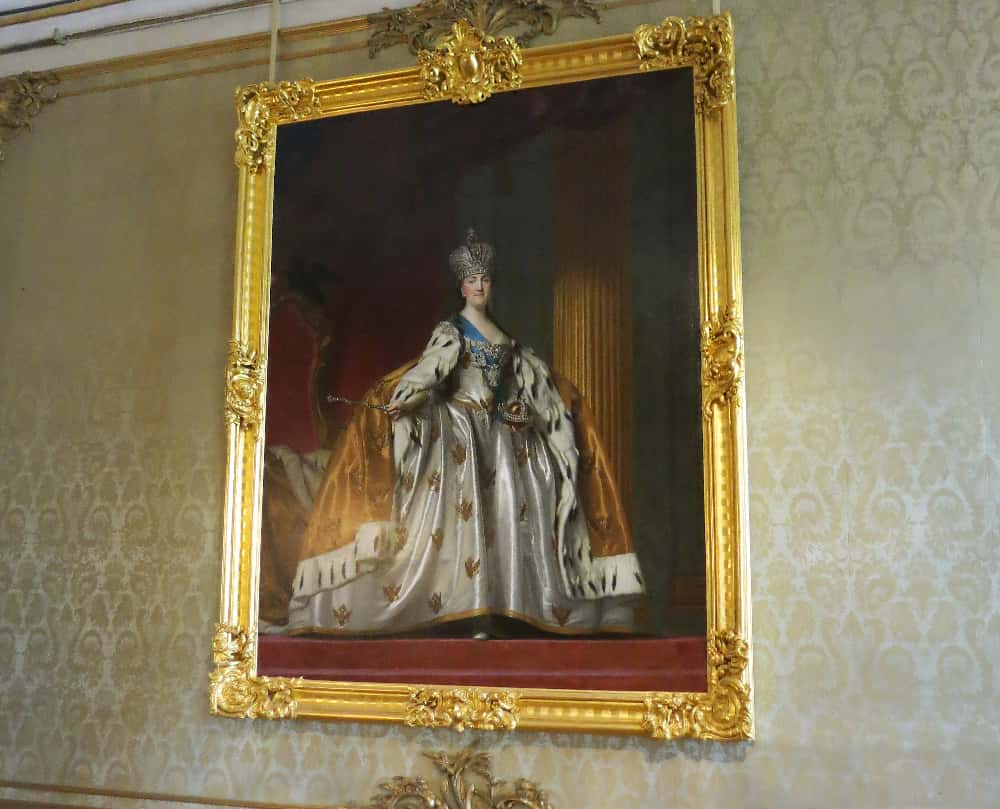 Wikimedia Commons, Ian Weddell
Wikimedia Commons, Ian Weddell
10. The Greek Project
Catherine wanted to reclaim the lands that had once been ruled by the Byzantine Empire in order to resurrect the Byzantine Empire. To do so, she reconquered Greek/Turkish lands and put one of her grandchildren on the throne. In letters explaining the initiative, Catherine’s secretary Bezborodko called the plan “The Greek Project.”
9. Potemkin Villages
Catherine’s lover Gregory Potemkin allegedly built a series of temporary villages in Crimea that were clean, pretty, and filled with happy, healthy farmers to show Catherine when she toured her lands. He did so to make her think her policies were more effective than they were. Some scholars debate the verity of the villages, but contemporary accounts affirm their existence. The term "Potemkin Villages" has now come to represent any desceptive or false construct.
8. Kickstarted Immunity
Catherine the Great helped to kickstart the smallpox vaccine. In 1762, she invited the greatest expert of the day to inoculate herself, her son Paul, and her court, wanting to set an example for her people that the procedure was safe. When the expert, Thomas Dimsdale, visited Russia again, over 20,000 Russians had been inoculated.
7. Secret Love Child
Catherine gave birth to an illegitimate son by her lover Gregory Orlov. Named Alexei Grigorievich Bobrinsky, he was brought up away from the court near Tula. After Catherine's death, he was made a count by his half-brother Paul.
6. Died a Mundane Death
Gossip had a tendency to follow Catherine wherever she went, and continued to follow her even after her death. Her enemies at court spread rumors about her death, with some claiming she’d died on the toilet, and others that she’d died while engaging in relations with a horse. None of those were true: she died in her bed the day after suffering a stroke, at the age of 67.
5. Tight Schedule
Always hard working, Catherine had her days mapped out in five-minute increments, which she maintained until her death. The only part of the schedule that was subject to change were her waking hours, which moved from 5am to 6am as she grew older.
4. Following Her Lead
While Peter I brought about reforms that gave women greater freedom to pursue education, it was during Catherine’s reign that women composers, poets, and writers began to flourish. Among the most prolific female artists was Princess Natalia Ivanovna Kurakina, who wrote at least 45 songs.
3. Philosophical Correspondence
Catherine enjoyed reading the works of the philosophers of the Enlightenment, including those of French philosopher Voltaire. The two began a correspondence where they discussed Catherine’s vision for a utopian Russia and her troops’ experience in battle.
 Wikimedia Commons
Wikimedia Commons
2. Wrote her Own Epitaph
Long before her death, Catherine wrote the epitaph that was to be inscribed on her grave. In it, she described herself as having “[done] her best to give her people happiness, freedom and wellbeing.” She also called herself a "true republican" in her politics.
1. Catherinian Era
Catherine the Great is regarded as one of the greatest rulers in Russian history, and she was the longest-ruling female leader in the country’s history. Her impact was so great that the period of her rule is known as the Catherinian Era, and is also called the Golden Age of the Russian Empire.


